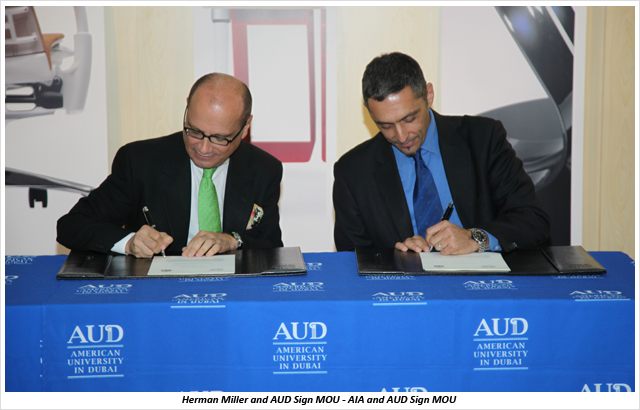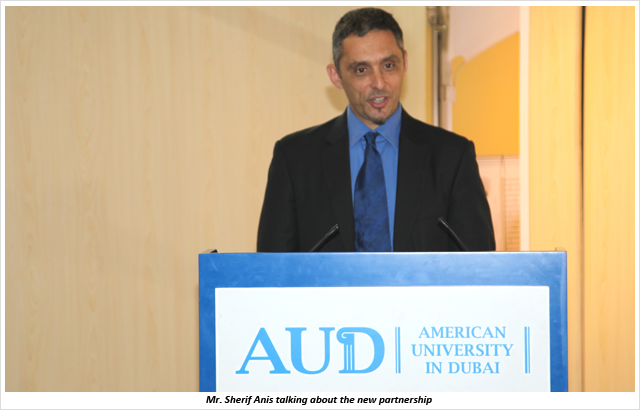By Kim A. O'Connell for AIArchitect
 For the last half-decade, construction cranes have been as ubiquitous in the United Arab Emirates as the shrubby desert grass. Western architects have answered the call of the region’s prosperity—names like Gehry and Guggenheim arriving in places like Doha and Abu Dhabi.
For the last half-decade, construction cranes have been as ubiquitous in the United Arab Emirates as the shrubby desert grass. Western architects have answered the call of the region’s prosperity—names like Gehry and Guggenheim arriving in places like Doha and Abu Dhabi.
But even in the shadow of skyscrapers, the Middle East construction industry is sensitive to political and economic forces. In just the past four years, a global recession and the Arab Spring have brought waves of violence and unrest to the region, making other markets, such as China, appear stable by comparison. As a result, many U.S. architects working in the Middle East closed their office doors and left for good.
Despite the tumult, in just two years of existence the AIA’s Middle East chapter has become the second-largest of the AIA’s five international chapters—evidence of the region’s continuing importance. Significant opportunities exist in the Gulf Cooperation Council countries, and there is plenty of work to be had, according to Thierry Paret, AIA, past president and founder of AIA Middle East and director/treasurer of AIA’s new International Region.Established in late 2012, AIA’s International Region (the AIA’s 19th region) encompasses all areas of the globe outside the United States. The region is designed to provide more structure and resources for architects working abroad, helping them navigate the sometimes contentious issues surrounding contracting, payment, scope of services, and cultural exchange that arise in international practice.
The AIA offers programs and events, and works to strengthen ties with architects in the host countries. Competence and a high ethical standard keep American architects competitive abroad, as does their leadership in certain development types such as research facilities, large-scale retail, universities, laboratories, hospitals, hotels, resorts, and airports.The Institute is also working with the U.S. Department of Commerce to promote trade missions that will bring professional design services to new markets in China and the Middle East, which remain strong sectors. Design and construction industry experts are also looking toward Brazil, which is rich in resources and has shown rapid growth in the past decade.
In the Middle East, however counterintuitive it may seem given its profound political and cultural divisions, Arab clients frequently seek out American firms for their design expertise and renowned professionalism, Paret says. “They want American architects on the ground,” he adds. “There’s a huge amount of respect here for American architects.”
Throughout Asia and Europe, and in developing countries as well, this feeling is echoed. Whereas earlier periods of professionalization saw American architects being trained abroad and bringing that expertise home (or foreign-born architects like Walter Gropius and Marcel Breuer teaching at American universities), current trends see more and more American-trained architects exporting their skills. Currently, about 2,400 AIA members live and work outside the United States, and many more work offshore on a temporary or commuter basis.
The benefits of international practice are manifold. Architects working abroad might find an even greater competitive advantage overseas than they would competing against their peers for domestic projects, and they have access to the brightest talents emerging from globally recognized universities. International markets can also serve as a hedge against domestic downturns (although this is far from foolproof). And sometimes foreign markets such as China, whose square mileage is roughly equivalent to that of the United States, are able to fast-track major projects that would be bogged down in bureaucracy here.
The work is not without risk, however. Among the issues that big firms address is nonpayment.And, without a doubt, there is physical danger in working in countries besieged by war and terrorism. Developing countries pose security risks for anyone who spends time there and architects are not exceptions.
Architects seeking work overseas also need to remember that, within each region, nations differ widely on every level. “One of the things we’ve come to understand from being over here is just how pluralistic this region is,” says Andrew Caruso, AIA, who is leading Asia talent strategy efforts for Gensler out of its Shanghai office, with a special focus on China, Japan, South Korea, Singapore, Thailand, and India. “Each country is different in terms of economic market, business systems, and educational systems. If you look at Tokyo and Bangalore, there are significant differences in our clients’ needs and interpersonal cultures, and these differences require thoughtful and strategic consideration.” The AIA’s historic capacity for exchanging ideas, developing best practices, and building a vibrant design community could bring value to the region, Caruso says.
Elizabeth Golden, an assistant professor of architecture at the University of Washington who has practiced in New York and Berlin, went overseas during the recession of the early 1990s. “Friends of mine had told me that Berlin was booming after the fall of the Berlin Wall, and that it was easy to get a job there, even as a foreigner,” she recalls.“There was this huge panorama of a [Berlin] construction site [in The New York Times] that really impressed me. It was then that I decided to make the move.” She joined the design team of Renzo Piano, Hon. FAIA, and Christoph Kohlbecker working on Potsdamer Platz, the public square in Berlin that was then the largest construction project in Europe.
She admits that, if she had it to do over again, she would take advantage of the connections and opportunities offered by the AIA Continental Europe chapter. “I felt very disconnected from practice in the U.S. while I was working in Germany,” she says. “I think it would have been a great way to stay in touch with other professionals like myself who were working abroad.”
Despite the risks, architects working abroad have much to gain and much to give. The world’s largest and most successful firms are multinational in the scope of their work, and their gains abroad will continue to encourage all large firms based in the U.S. to consider options outside of the local markets that they have historically pursued. After all, economic capital knows few, if any, boundaries, and work for architects tends to follow it. —Kim A. O’Connell
Learn more at aiainternational.org.










